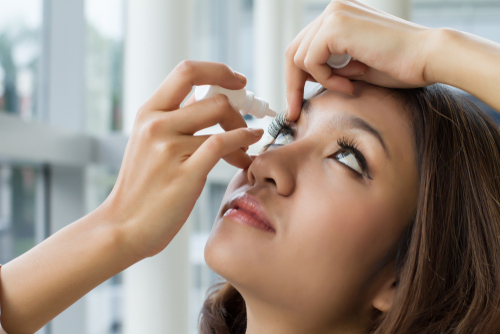Are Prescription Eye Drops Worth It?
June 22nd, 2023
If you’ve been given a prescription for eye drops, regardless of your eye condition, it’s important that you get them filled and use them as directed. Your eye doctor has determined that your prescription eye drops are your best bet for maintaining your healthy eyes and your vision.
Using your prescription eye drops will even help prevent vision loss in some cases. Keep reading to learn more about prescription eye drops and why it’s worth it to take them!
Prescription Eye Drops for an Eye Infection
If you’re only using prescription eye drops for a short period of time to combat an eye infection, using them according to instructions should eliminate the infection in no time. Bacterial eye infections such as conjunctivitis, which is also called pink eye, and corneal ulcers are treated with antibiotic prescription eye drops.
These are not available over-the-counter, so if you’ve been prescribed them, it’s important to take them even though your symptoms may be improving. Like any antibiotic, it’s best for you to follow your prescription instructions and apply the drops until they’re gone.
Just like oral medications, the course of treatment has been determined in order to make sure the infection is addressed and eliminated.
Prescription Eye Drops for Glaucoma
When it comes to glaucoma treatment, the first line of defense is often prescription eye drops. It’s the most common treatment for the eye condition.
These drops can help lower pressure in the eye and prevent damage to your optic nerve. Prescription eye drops cannot cure or reverse vision loss, but they can slow the progression of glaucoma so that further damage is prevented.
Glaucoma eye drops are intended to be used every day. Depending on your prescription, you may need to apply them once, twice, three times, and even up to four times a day.
It’s essential to take them exactly as instructed.
Prescription Eye Drops For Dry Eye
Eye drops for dry eye are designed to help lubricate and moisturize the eyes, reduce inflammation, and increase tear production. While there are over-the-counter options, prescription eye drops can be more effective than OTC brands.
While the condition sounds simple, dry eye can be a complex eye condition. There’s more involved than adding moisture to the eye.
There are different types of dry eye, which may require different methods of treatment.
Aqueous Deficient Dry Eye
This kind of dry eye describes eyes that don’t produce enough tears. The tear film is composed of lipids, water, and mucus.
The right balance of each component is needed for a tear film that keeps the eyes moist. Aqueous tears are the watery middle layer of the tear film.
If there isn’t enough aqueous tears, this can result in dry eye.
Evaporative Dry Eye
Evaporative dry eye describes tears that evaporate too quickly. The glands that produce the outer layer of oils and lipids don’t produce enough to balance and prevent evaporation of the watery layer.
This also produces dry eye.
Mixed Dry Eye
Mixed dry eye s a combination of aqueous deficient and evaporative dry eye where both conditions are present.
Why Are Prescription Eye Drops For Dry Eye Worth It?
Prescription eye drops take into consideration the types of dry eye and improve tear quality. They lubricate the eye, reduce inflammation, and increase tear production.
This type of treatment is not available over-the-counter, so it’s worth it to invest in prescription eye drops as that will best treat your dry eye symptoms by managing the underlying conditions.
Do you have questions about eye drops? Schedule an appointment at Laser Eye Center in Huntsville, AL, today!



